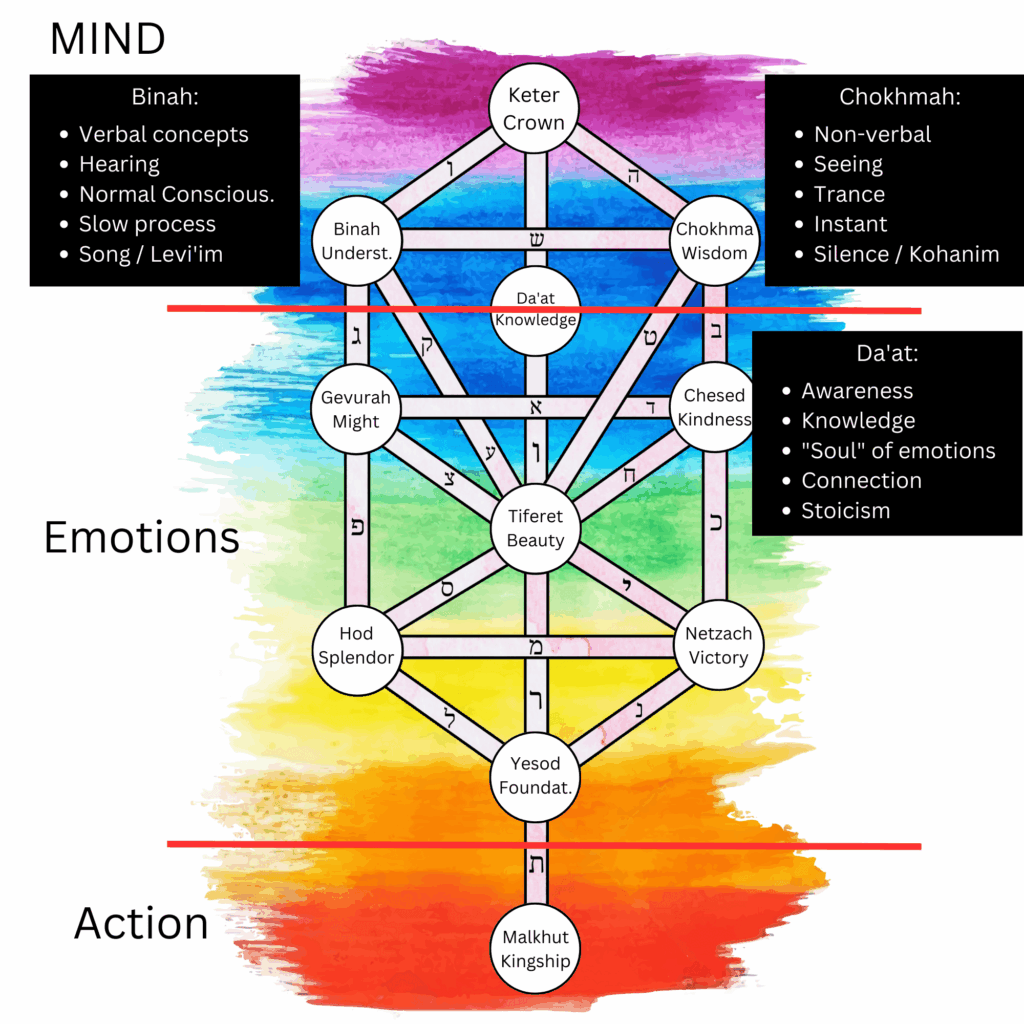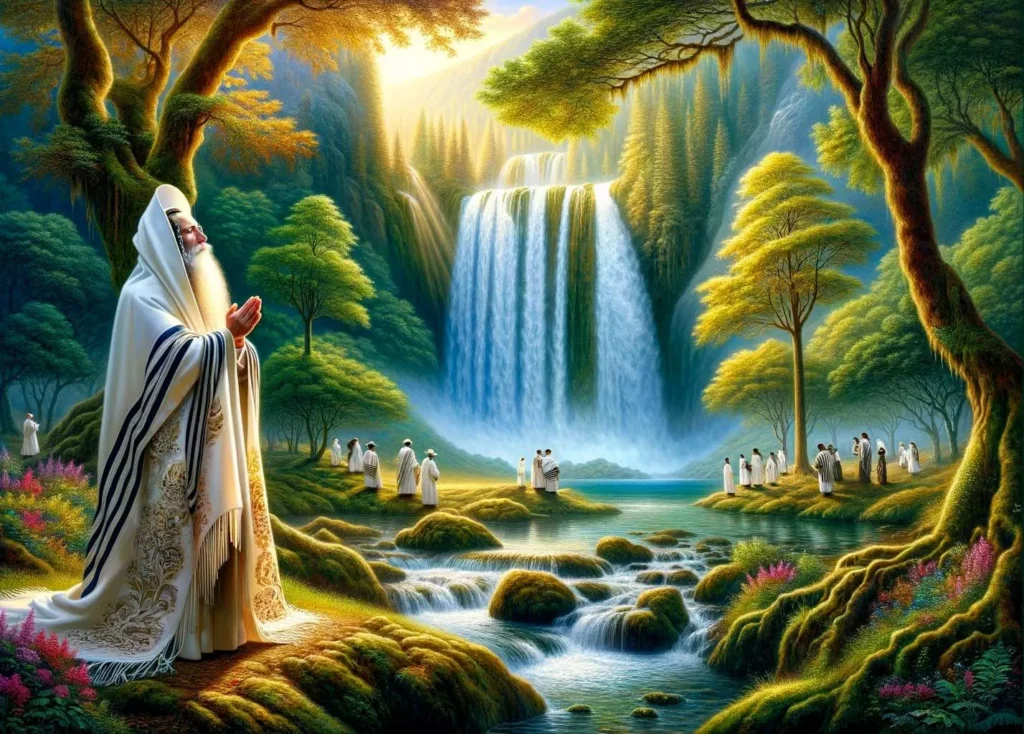The first Sephira, Keter (lit. “crown” in Hebrew) represents the highest, and first, point of divine manifestation.
The mystical Tree of Life diagram of 10 Sephirot form the basis for all of Creation. While there are actually 11, we say there are 10 because that is the number associated with Kedusha (holiness), where the system if complete. Sometimes the Sephira of Da’at is counted in place of Keter, and sometimes vice-versa. It all depends on which spiritual system we are analyzing.
(Yet, sometimes, like in the Amidah and Aleinu prayer we do bring the Mokhin with all 11 together).
There are many ways we can analyze them but, before doing that, we need to understand deeply what each Sephira is all about.
This article is part of the Tree of Life series:
- Sephira of Keter
- Sephira of Chokhmah
- Sephira of Binah
- Sephira of Da’at
- Sephira of Chessed
- Sephira of Gevurah
- Sephira of Tiferet
- Sephira of Netzach
- Sephira of Hod
- Sephira of Yesod
- Sephira of Malkhut
The first desire
The Sephira of Keter symbolizes the initial spark of desire, that impulse that we have before we are able to articulate or even imagine something. Think of when you are hungry and want to eat something. Before you can even tell yourself “I need to eat”, there’s a feeling that propels us to articulate that. It’s inscrutable and beyond reason, but we know it’s there before all else. This is Keter.
Keter is therefore also the source for Emunah (“Faith”) and will because they are above reason. They exist but they are hidden. This is why sometimes we can’t logically prove that something is true (like love), yet we simply know it is.

When talking about God’s attributes, the Zohar describes the Sephira of Keter as “pure compassion” and “lovingkindness. However, when we look at the state of the world, this might sound puzzling. The reason why many times we don’t feel that compassion is because of the many spiritual levels (and negative husks) that block us from realizing that.
In the scale of the spiritual worlds, the higher we go, the more God’s light (and Sephirot) are revealed. The converse also happens: the lower we go, the more concealed God’s light and Sephirot are.
Yet, ultimately, the Zohar writes that were it not for God’s compassion from Keter, which is everlasting and all-encompassing, the world could not be sustained for even a moment, since the minutest sin from Creations would make it to cease to exist.
Keter in our daily lives
In our daily lives, it’s important to be aware on what propels us to make the decisions we make. Is it a real desire to bestow and be kind by offering positive feedback? Or is it anger, pettiness, jealousy?
This might sound silly, but it makes all the difference. Our sages teach that words from the heart (i.e. a positive place), enters the heart (i.e. cause a positive effect).
Moreover, the quality of the light of Keter (i.e. the real source of that will), will directly impact how the lower Sephirot will react and ultimately manifest in Malkhut, the lowest Sephirot in which everything is revealed.

But since it precedes all verbal and non-verbal thought, this Sephira is also associated with Emunah and desire, because it is higher than our capacity to articulate. It is what it is and nothing can explain it.
In the grand scheme of Creation, it can be understood as the infinite, boundless light of Hashem (according to Rabbi Yosef Gikatilla) and represents ultimate unity with everything. It is so high that, in the words of Rabbi Moshe Chaim Luzzatto (the holy Ramchal), “One cannot ask it nor receive answers about it”.
In the Zohar we also find that the Sephira of Keter, that is, Hashem’s Will is pure compassion with the desire to bestow only good to His Creations.
As Creatures built with the divine image, we also have our own Keter (crown), which we must surrender to Hashem doing his Mitzvot and studying His Torah.
The 13 Strains of the Beard of Arich Anpin
The Idra Rabbah and Idra Zuta assemblies marked a pivotal moment of rectification, serving not only to preserve the deep ideas of Kabbalah but also to ensure the perpetuity of the world itself. It marked a point of inflection in the history of the entire world, illuminating the spiritual realms and sustaining them throughout generations.
Within the Idra Zuta, we are introduced to the incredibly exalted emanations from Keter, the “crown” of Hashem’s manifestation. Among these emanations are the awe-inspiring Tikkuney Diknah, Nimim, and Hivartei — symbolized by various appellations for the “strands of the beard” and the 13 Attributes of Mercy—which bestow boundless mercy and compassion upon all of Creation.
These divine emanations are indispensable, for without them, the world “could not be sustained for a single moment”. Through the Idra’s revelations, we glimpse the profound love that Hashem holds for all of His Creations, as everything is included in the “Keter” (the ultimate will), which, the Idra depicts as being complete and unbounded compassion.

Nicknames of Keter
Keter is also called associated with Emunah (faith), pleasure and desire. Every word in the Tanach and Talmud is associated with a Sephira. According to R’ Yosef Gikatilla in his Sha’arei Orah, the following terms are also associated with Keter:
- The Holy Name Eheye”h – אהי״ה.
- Nothing – Ayin – אין
- Crown – Keter – כתר
- The Supernal East – Mizrach HaElyon – מזרח העליון
- The Upper Mazal – Mazal HaElyon – מזל העליון
- The Supernal Source – Makor HaElyon – מקור העליון
- The Supernal Kindness – Chessed HaElyon – חסד העליון
- The Source of Desire – Mekor HaRatzon – מקור הרצון
- The Large Aleph – Aleph HaGedolah – אלף הגדולה
- Good Kindnesses – Chassadim Tovim – חסדים טובים
- Preceding – Kedem – קדם
- The Dew of Chermon – Tal Chermon – ט״ל חרמון
- The Thirteen Attributes of Mercy – Yud Gimel Midot HaRachamim – י״ג מידות הרחמים
- The Spring (or eye) of Mercy – Ein HaRachamim – עין הרחמים
- He – Hoo – הוא
- Humility – Anavah – ענוה
- Elder – Zaken – זקן
- The Holy Ancient One – Atika Kadisha – עתיקא קדישא
- The Supernal Holy Beard – Dikna Ila’ah Kadisha – דיקנא עילאה קדישא
- The Ancient of Days – Atik Yomin – עתיק יומין
- The Head – Rosh – ראש
- The White Head – Rosh HaLavan – ראש הלבן
- The Hairs of the Beard – Sa’arot HaZakan – שערות הזקן
- The Straight Nun – נו״ן פשוטה
- The Tip of the Yod – י of the Name HaShem -יהו״ה
Concluding remarks
The exploration of the Sephira of Keter and the 13 Attributes of Mercy that come from it reveal many fascinating insights into Hashem’s Hashgacha (divine providence). These attributes, rooted in the Torah and Sefer Micah, provide a framework for understanding Hashem’s infinite compassion and forgiveness.
The Ramchal in his famous book Palm Tree of Devorah exorts us to emulate these attributes in our lives. While revelation of Keter is reserved for special moments like the Mincha of Shabbat, the Festivals and after Chatzot Laylah, we can nevertheless reveal them by embodying them, as Yosef HaTzaddik was blessed by Yaakov Avinu (Ben Porat Alei Ayin), which is the “single eye” of Atika Kadisha that kept Yosef alive and well.
Ultimately, understanding and internalizing the 13 Attributes of Mercy (from Keter) is not merely an intellectual pursuit but a spiritual endeavor that deepens one’s connection to Hashem and helps us develop a sense of compassion, forgiveness, and grace in the world.







